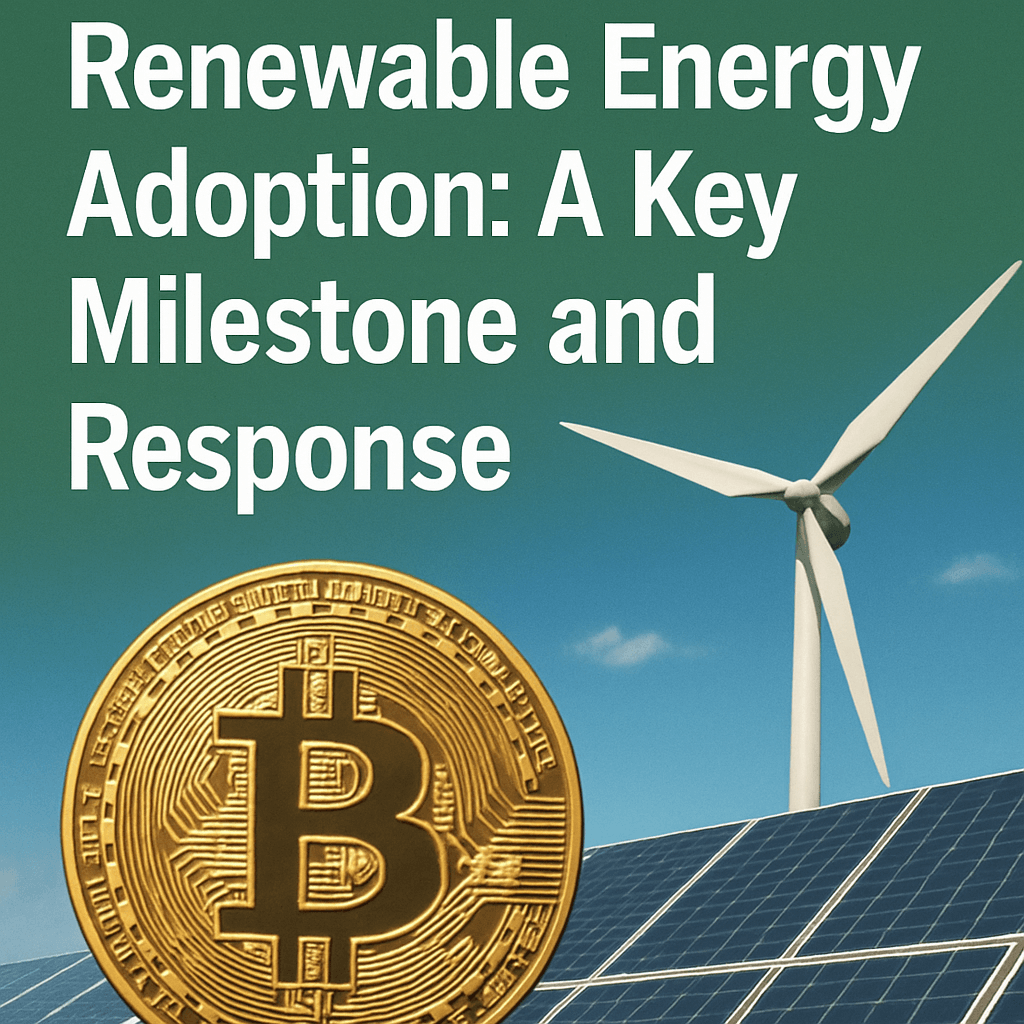Bitcoin Boosts Renewable Energy Adoption: A Key Milestone and Response

This week at the 2025 Bitcoin conference, Ripple’s chairman Chris Larsen publicly acknowledged the growing momentum of renewable energy adoption within the Bitcoin network. This statement followed Ripple’s ceremonial donation of the “Skull of Satoshi,” an artwork intended to foster dialogue around Bitcoin’s environmental impact.
83 > Ripple’s Green Initiatives
Larsen’s comments come as a recognition of the strides Bitcoin has made over the past few years in reducing its carbon footprint. Decentralized networks like Bitcoin have faced increasing scrutiny regarding their energy consumption, especially through its proof-of-work (PoW) mining protocol, which has been likened to energy-intensive industries. However, a recent report by the Cambridge Centre for Alternative Finance indicates that nearly 50% of Bitcoin’s energy now comes from renewable sources—including wind, solar, hydropower, and even nuclear energy.
- Wind Energy: Many Bitcoin miners have set up operations near wind farms to capitalize on excess energy.
- Hydropower: Mining operations in regions like Sichuan, China, benefit from plentiful hydroelectric power, especially during the rainy season.
- Waste Gas Utilization: Miners are increasingly leveraging solutions that convert flared natural gas from oil drilling into energy for mining rigs, effectively turning waste into power.
The ‘Skull of Satoshi’ and Its Symbolic Importance
The “Skull of Satoshi” is more than just a creative gesture. Presented at the conference, the sculpture is now housed at the Bitcoin Museum in Nashville, underscoring Ripple’s desire to build stronger ties within the crypto community. This move comes against a backdrop of historical tensions between XRP supporters and Bitcoin advocates that have arisen over differing interests in transaction speeds, fees, and environmental sustainability.
By donating such an iconic piece, Ripple’s leadership aims to promote constructive discussions rather than conflict, signaling a willingness to collaborate for broader industry advancements.
Larsen’s Commitment to Climate Action
In his remarks, Chris Larsen elaborated on his 2023 initiative, the “Change the Code, Not the Climate” campaign. Funded entirely by Larsen himself to the tune of six figures, the campaign aimed to encourage Bitcoin’s transition from its energy-intensive PoW model to a more sustainable framework. While the initiative did not achieve its intended goals, Larsen remains optimistic about future prospects for collaboration.
“When I funded the ‘Change the Code’ campaign, my goal was to see if there was a way to turn Bitcoin into an accelerator for direct air capture. The campaign didn’t work, and that’s ok! Ripple did not fund this campaign,” said Larsen on social media.
Industry Perspectives and Future Steps
Both Ripple’s chairman and CEO Brad Garlinghouse assert that the time has come for the cryptocurrency industry to unify. Garlinghouse pointed out that regardless of the varying technologies—whether XRP or Bitcoin—both camps suffer from external pressures such as regulatory scrutiny and overall market skepticism.
Experts note that collaborative efforts could lead to shared resources and innovation, which are crucial for fortifying the sector’s long-term sustainability. Legal frameworks have yet to catch up with rapid technological advancements, making dialogue and cooperation critical as the market evolves.
The Road Ahead for Bitcoin and Renewables
As Bitcoin approaches its 50% renewable energy milestone, analysts are cautiously optimistic about its capacity for further sustainable practices. Leveraging renewable energy not only improves Bitcoin’s public image but could also influence price stability and adoption rates, prompting more miners to transition to eco-friendlier methods.
Efforts to modernize Bitcoin’s infrastructure should address concerns about environmental impacts while balancing decentralization principles. The evolution of blockchain technology could necessitate increased dialogue about hybrid models that embrace Proof of Stake (PoS) solutions, even in traditionally PoW networks.
Overall, Ripple’s gestures and Bitcoin’s renewable energy milestone set a hopeful backdrop for what could evolve into a more unified and sustainable crypto ecosystem.
Featured Image: Image from Unsplash